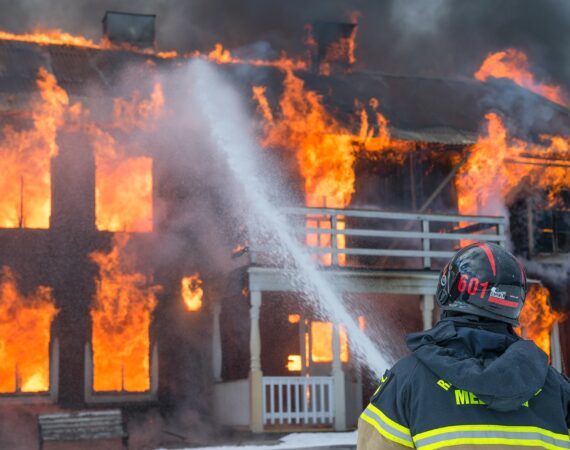Fire-Resistant Materials and Their Importance in Building Integrity
Building to Withstand the Blaze
In an era where structural fires pose significant risks to both life and property, the use of fire-resistant materials in construction is more critical than ever. This blog post delves into the various fire-resistant materials used in building projects and explores why they are essential for maintaining building integrity and ensuring occupant safety.
Overview of Fire-Resistant Materials
- Fire-Resistant Glass: Used in windows and doors, this type of glass can withstand high temperatures without breaking, helping to contain fires and prevent the spread of smoke and flames.
- Intumescent Paints: These special coatings expand when exposed to high heat, forming a protective barrier that insulates structural elements from the effects of fire.
- Fire-Retardant Treated Wood: Wood treated with fire-retardant chemicals that reduce its flammability and delay the onset of burning.
Benefits of Using Fire-Resistant Materials
- Enhanced Safety: Materials designed to resist burning play a crucial role in preventing fire spread, giving occupants more time to evacuate and allowing more time for emergency response.
- Structural Integrity: Protecting the structural components of a building from fire damage is vital for maintaining the building’s stability and integrity during and after a fire.
- Compliance with Building Codes: Using fire-resistant materials helps ensure that buildings comply with local fire safety standards and regulations, which are critical for legal and insurance considerations.
Challenges and Considerations
- Cost Implications: While essential, fire-resistant materials often come at a higher cost compared to standard materials, impacting the overall budget of construction projects.
- Installation and Maintenance: Proper installation and regular maintenance are necessary to ensure that fire-resistant materials perform as expected over the life of the building.
- Balancing Aesthetics and Functionality: Integrating fire-resistant materials without compromising the architectural aesthetics of a building requires careful planning and design.
Real-World Applications
- A High-Rise Office Building in New York: Employed fire-resistant glass and intumescent paints throughout its structure, significantly enhancing its fire safety ratings.
- A Residential Complex in California: Integrated fire-retardant treated wood in its construction, addressing the increased risk of wildfires in the region.
The Imperative of Fire Resistance in Modern Construction
As building technologies advance and urban densities increase, the importance of integrating fire-resistant materials into construction projects cannot be overstated. These materials are not merely a building requirement but a fundamental aspect of modern architectural design that prioritizes safety, compliance, and durability.




